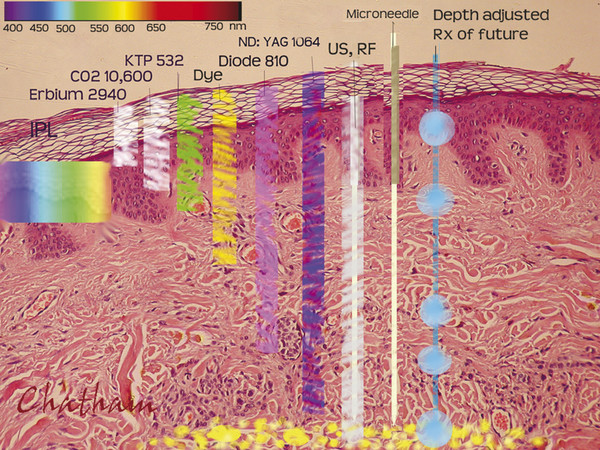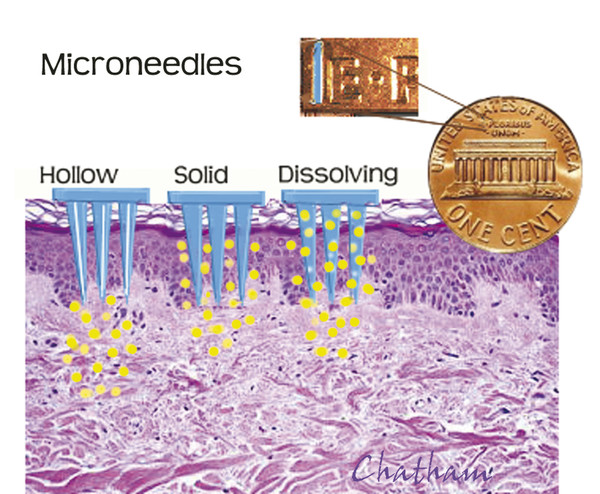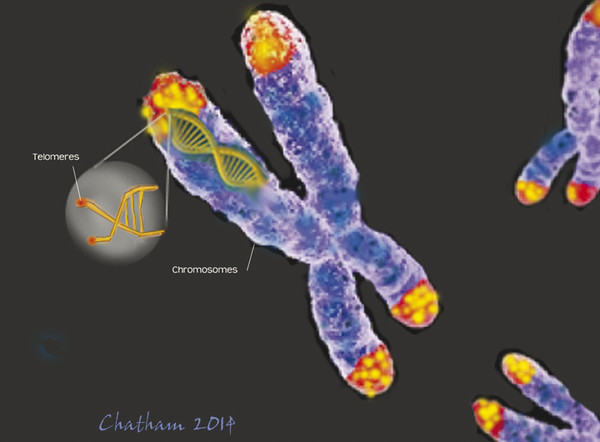Fig. 35.1 “Doc, you’ll double your money before your patients even realize it doesn’t do much.”
Intense pulsed light (IPL) and broadband infrared (BBIR) light devices apply very powerful pulses and are effective in targeting skin with excessive red and brown lesions. These may be combined with topical sensitizing agents such as aminolevulinic acid (ALA) in photodynamic therapy (PDT). Light-emitting diodes (LEDs) use visible spectrum, monochromatic light therapy for photoaged skin12 and are currently offered by both medical and nonmedical businesses. These include light-therapy pods at some fitness centers and spas as a means to “improve skin and slow aging,” the only requirement being the consumer’s willingness to purchase.13
The use of home devices is expanding at lightning speed with P. T. Barnum-like claims of efficacy. Some mechanisms even appear to be based on science and research. Examples of some of today’s home-consumer devices are listed in ▶ Table 35.1.
OTC system | Website | Uses |
Opal Sonic Infusion System | www.Clarisonic.com | Infuses antiaging serum into epidermis for fine-line and wrinkle reduction |
ReFa PRO Platinum Electronic Roller | www.Refusa.com | Uses microcurrent to improve skin tone |
Clarisonic Mia2 | www.Clarisonic.com | Utilizes sonic frequency to clean pores and deliver topical antibacterials |
NuFACE Trinity Facial Toning Device | www.mynuface.com/professionals | Employs microcurrent to stimulate muscles, increase circulation, and stimulate collagen |
Tanda Luxe | www.YoungPhar.com | Uses red light and sonic vibration to stimulate collagen and elastic production and increase microcirculation |
No!No! Skin | www.my-no-no.com | Utilizes LHE to reduce acne, emitting green and red light and heat to destroy bacteria and reduce inflammation |
TRIA Skin Perfecting Blue Light | www.triabeauty.com | Targets P. acnes to reduce acne |
Claro IPL Acne Clearing Device | www.myclaro.com | Employs blue light to destroy P. acnes, red light combined with infrared heat to sooth inflammation |
Body Essentials Light & Massage Therapy Brush | www.bodyessentialsforyou.com | Uses red light and LEDs and massage to boost cell energy and increase circulation |
Abbreviations: LEDs, light-emitting diodes; LHE, light heat energy; OTC, over the counter; P. acnes, Propionibacterium acnes. | ||
Nonlaser heating devices have also proliferated, attempting to harness various energy technologies to effect desirous changes not only on the outer surface of the skin, but on tissues deep in the skin itself in a hopefully nonablative, nondestructive process. Denaturation of collagen occurs at about 60 to 65°C with ensuing neocollagenesis. The advantages of less downtime, lowered risk, and rapid healing are appealing. Energies include radiofrequency (RF), microwave, infrared (IR), ultrasound (US), LEDs, and combination therapy machines.14,15
Some devices first penetrate the skin with microneedles prior to energy delivery, attempting to precisely target and deliver measured RF energy directly into the dermis.16,17 Other RF skin-tightening devices include those directly contacting the skin surface creating subablative/microablative effects.18,19 Still other instruments use US waves that induce a molecular vibration in a given tissue creating thermal coagulative focal necrosis.20
And yet other tools are contactless (“no-touch”) devices with panels that deliver IR thermal energy using frequencies and impedance variances based on tissue levels.21 Electromagnetic energy is converted to heat and currently targets adipose tissue. And whereas most neuromodulators/neurotoxins are injected subcutaneously to affect muscle function, the use of intradermal injections continues to be studied, including measurable changes in skin elasticity (D. Ellis, email communication, January 2014). Research also continues in the search for an ideal topical wound-healing accelerator.22,23 ▶ Fig. 35.2 shows the approximate level of skin penetration of laser wavelengths and other energy-producing devices.

Fig. 35.2 Light spectrum, relative skin penetration of laser wavelengths, and other energy modalities, including technology of the future.
35.3 Alternative Therapies: Hope or Hype?
When one peruses some of the seminars and courses offered within the health and beauty industry, one can only marvel at the number of potions, lotions, devices, inventions, techniques, and other gizmos that promise beauty and magic. Here are a few examples:
Microneedling as a Botox alternative
Microcurrent therapy to eliminate skin wrinkles and tone skin
LED therapy for skin suffering from acne and aging
Infusion therapy using galvanic current and infrared energy
Stem cells to reprogram skin cell function
Mesotherapy to awaken stem cells and alter DNA
Plant stem cells to regulate cellular gene activity
Growth factor with tetrapeptides to resynchronize cellular rhythm
Light and sound therapy to oxygenate cells
Ultrasonic microdermabrasion
Micronized high-frequency current for photodamage and acne
Oxygen therapy for skin rejuvenation
Negative pressure for skin tightening
Energy-light-sound facial rejuvenation
Multisensory spa capsules for total body rejuvenation
Cell-phone apps for treatment of acne from the screen light
35.4 Sexy Topicals
The search for the “Holy Grail” of topical skin rejuvenation magic continues.24 And the “Sirens’ song” of many products contributes to the cosmeceutical beauty industry growing into sales of $292 billion in 2015, according to one estimate.25
One highly marketed cream “merges bio-technology with beauty, … detects and recruits healthy-looking skin cells to repair and renew the appearance of skin, visibly reversing the look of thin, crepey, aging skin, … strengthens skin and dramatically increases the appearance of skin density and elasticity, returning fullness, firmness and tone.” Another cream claims to contain skin telomerase, an enzyme that creates telomeres capping at the end of chromosomes and “resets your skin’s aging clock by minimum of 5 years, converting adult stem cells to newly minted skin cells, results are indelible and life changing.” Plant cells from a rare Swiss apple tree “preserves and protects skin stem cells.” Another uses tropoelastin secreted from human embryonic stem cells and “enhances the natural formation of collagen and binds with existing protein chains in the skin to make it appear smoother and firmer” (▶ Fig. 35.3). Other creams derived from human skin claim they contain “cell-altering human growth hormones.” Yet another uses bovine stem-cell products claiming that “existing cells feel younger, … older cells act younger and triggers significant increase in cellular growth.” A product using tissue from Russian women placenta donors purportedly destroys bacteria and viruses and stimulates regeneration of skin cells. (The U.S. Food and Drug Administration [FDA] bans placenta hormones from use in cosmetics.) Another product claims to contain DNA repair enzymes and technology straight from the sequencing of the human genome.

Fig. 35.3 “Well, I could offer you some stem cells. They are fresh and we are offering three for the price of two.”
Wow! Note that the FDA allows the use of “DNA” as a marketing word. Claims are allowed regarding skin appearance. What is not allowed is to claim a product affects structure or function. If these claims are made, it is a drug and must be approved as a drug. So, is the claim “revitalizing cells” a medical or marketing term? Certainly the world is a more interesting place with acupuncture, hypnotherapy, homeopathy, herbology, Kirlian photography, aura imaging, gas discharge visualization, and thought-field therapy. But where does fiction end and science begin?26
Transdermal administration of drugs such as analgesics and hormones has been successfully used; however, larger molecule or water-soluble drugs such as vaccines, proteins, peptides, and antibodies have difficulty in penetrating the epidermis.
Microneedles, some only 1 mm long,27 are now used to administer vaccines28 and other drugs, as a pain-free alternative to traditional needles. Wafer-sized topical patches coated on one side with microscopic needles can facilitate transdermal delivery of a drug that normally cannot pass through the skin. Some are made of hollow steel and others coat the steel with an agent. Yet others are composed of injection-safe soluble polymers whose small protrusions break off when applied to the skin, dissolve, and release the drug. ▶ Fig. 35.4 illustrates three types of microneedle patches and their drug-delivery mechanisms.

Fig. 35.4 Microneedles with delivered agents.
35.5 What’s in the Future?
When we try to extrapolate from today to tomorrow, I envision continuations and evolutions as a perpetual journey without end. In broad terms, we can expect that the goals of skin rejuvenation will be to protect, maintain, and regenerate. Skin should be as undamaged, healthy, vital, functional, and attractive as possible. Preventive strategies will always be emphasized. Maintenance will always be important. Regenerative strategies will be necessary when more than maintenance is required. Replacement with new skin will be part of the regenerative process. The message of prevention of skin deterioration will be louder in developed countries and continue to focus on the effects of excessive irradiation, environmental oxidizers, and exposure to tobacco and other ingested and inhaled products. Skin protection will be more greatly valued.
Prediction: One day a vaccine will be administered to help protect the skin at a cellular level from certain external deleterious agents such as ionizing irradiation and pollutant oxidizers. (Zostavax vaccine [Merck & Co., Inc., Whitehouse Station, New Jersey] for herpes zoster already is widely recommended and can help reduce the physical skin and neurological trauma produced by this aggressive virus.29) Aging therapies will not be limited to a special few, and will become mainstream. Improving the external visible symptomatic signs of aging will be only one part of a broader strategy of treating the whole body to preserve health and longevity.
35.5.1 Sunshine Act
Topical skin agents applied by the consumer will become more efficacious and ubiquitous because more “regular folks” will adopt use once they are convinced it is in their best interests. Few would argue that today’s multibillion-dollar skin lotion and potion business is not a fluffy one, rampant with unsubstantiated claims. Consumers will demand more accountability of promotional claims.
Prediction: Gradually the “hype” associated with this industry will be replaced with science, and grading standards will be applied to skin rejuvenators (much like automobiles and other consumer products are rated today). It is likely that advertising will be more regulated, with unsubstantiated claims tightly curtailed and evidence-based therapies valued (▶ Fig. 35.5). The FDA continues to monitor claims of drug companies and alter food labels30; and the U.S. Federal Trade Commission (FTC) now requires more disclosure by medical companies and speakers than ever before with the Sunshine Act additions.31 The Sunshine Act requires applicable manufacturers of drugs, devices, biologicals, or medical supplies to report annually to the Secretary of Health and Human Services (HHS) certain payments or other transfers of value to physicians and teaching hospitals. It also requires applicable manufacturers and applicable group purchasing organizations (GPOs) to report certain information regarding the ownership or investment interests held by physicians or the immediate family members of physicians in such entities.

Fig. 35.5 “Is this procedure evidence-based?”
Prediction: As physicians demand more peer-reviewed clinical studies that are not funded and controlled by manufacturers, truthful clinical studies on efficacy of new devices will be the norm rather than the exception.
35.5.2 DNA and RNA
Will it really ever be possible for a topical cream to alter one’s DNA or make genes younger? That sounds a bit scary! More likely a product will contain compounds that will assist the body’s own natural physiology in its role of protecting and healing the skin. This includes increased use of numerous peptides that act as messengers to a specific cell. The most useful will be those that act to either switch a negative function off or switch a positive function on by increased expression of specific skin biomarkers, thus conferring antiaging skin-care benefits. But since products do not affect all skin cells in an identical manner and may even be toxic to the skin, greater specificity in prescribing will occur.32
Pharmacogenomics, the study of how genes affect a person’s response to drugs, combines pharmacology (the science of drugs) and genomics (the study of genes and their functions) to develop effective, safe medications and doses that will be tailored to a person’s genetic makeup. This will increase. For example, knowledge gained from the Human Genome Project (HGP), completed in 2003,33 will aid researchers in understanding how inherited differences in genes affect the body’s response to medications. The HGP identified nearly 25,000 genes in human DNA and how they are influenced in response to both internal and external stimuli. Many human diseases, including most skin diseases, have origins in the genetic characteristics of the affected individuals.
Prediction: Analyzing the transcriptome (that small percentage of the genetic code that is transcribed into ribonucleic acid [RNA] molecules of a human cell line) using different ingredients will help determine which patients’ skin will react positively to prolong cell life and help to avoid prescribing these ingredients to patients whose skin and body react negatively (contact dermatitis as an example). This information will provide answers to the behavior of skin aging that shows an age-dependent increase or decrease of biomarkers and also help validate the efficacy of antiaging compounds formulated into topical solutions.34
DNA sequencing, the process of determining the precise order of nucleotides within a DNA molecule, may assist in creating specific treatments for certain genotypes. One method of genetic manipulation of aging genes uses RNA interference (RNAi) technology. RNAi technology provides a potential means for blocking expression of a specific deleterious gene and how a chemical compound might alter it.35
Prediction: Specific drugs will be developed to bind with messenger ribonucleic acid (mRNA) molecules and block the production of certain disease-creating proteins, thereby thwarting progression of a specific disease. As overall health is improved, skin health and appearance will also be improved.
35.5.3 Biologics
Human skin surfaces are complex ecosystems for microorganisms, including fungi, bacteria, and viruses, which are known collectively as the skin microbiome. Residing on each square centimeter of skin are approximately 1 million bacteria, and many common skin conditions are associated with both impaired skin-barrier function and increased microbial colonization. Friendly populations of microbiota (naturally occurring commensal bacteria) can be disturbed through harsh soaps and other environmental toxins. The more we learn about the interactions of host gene-microbiota will lead to a better and more individualized treatment and prevention of skin inflammatory diseases. In one study, topical application of 0.2% Propionibacterium acnes reduced papules and pustules by 89%.36 The skin is very closely connected to the gut through the “gut-skin axis.”37 Since many diseases and conditions associated with aging seem tied to inflammation (“inflammaging”), efforts to control inflammation will play a big role in “healthy aging.” This inflammation may be seen as acne, eczema, psoriasis, and other types of dermatitis as well as unwanted aging of skin.3,38,39 Probiotics can reduce gut inflammation, one source of systemic inflammation, and can therefore also improve skin disorders through a similar mechanism.40,41
Prediction: New biological therapies will develop to enhance skin function. Topical probiotic formulations will likely assume greater usage, including mimicry of bacterial infection to create an inflammatory response of the skin.42 Oral nutraceuticals will emerge as adjunctive modifiers of skin biology.
Cultured autologous cells will be reintroduced into the body for a variety of indications and will become predicatively effective in regeneration of healthy tissue, both in the reconstructive and aesthetic arenas, and at an affordable price.43,44,45 (Offshore labs will have reduced labor costs.) Research will continue in the development of stem cell-derived factors. For example, transforming growth factor-beta (TGF-β3) is the growth factor that distinguishes fetal cell healing from adult cell healing and produces less inflammation while promoting abundant collagen. And if the good anti-inflammatory cytokines dominate, less inflammation means a slower rate of senescence.46,47
Prediction: Application of cytokine-related compounds such as growth factors, interleukins, and interferons, including those extracted from stem cells, will increase in use as one means of replacing those cytokines lost through the aging process. Stem cells harvested from stem cell “farms” (labs really) will produce millions of stem cells, with extracted compounds being combined for skin regenerative “cocktails” created for specific skin rejuvenating scenarios.
35.5.4 Telomeres
A telomere is a region of repetitive nucleotide sequences at each end of a chromatid. It protects the end of the chromosome from deterioration or from fusion with neighboring chromosomes (▶ Fig. 35.6). During chromosome replication, the enzymes that duplicate DNA cannot continue their duplication all the way to the end of a chromosome; therefore, in each duplication the end of the chromosome is shortened. This leads to an irreversible state of growth arrest known as cellular senescence or programmed cell self-destruction (apoptosis). Telomere shortening can be hastened by unhealthy factors such as obesity, smoking, and stress.48 But can telomere degradation be lessened or prevented? Human T cells, which are critical in immunological control over infections and cancer, have the ability to activate the enzyme telomerase that binds and extends the telomeres.49 Research continues in using cycloastragenol from the Astragalus plant that has been shown in one study to activate telomerase.50 Telomerase activators have suggested a slowing of aging in mice.51,52 Other studies on affecting telomeres and increasing protective telomerase continue including lifestyle and dietary factors.53

Fig. 35.6 Chromosomes demonstrating end-telomere segment.









